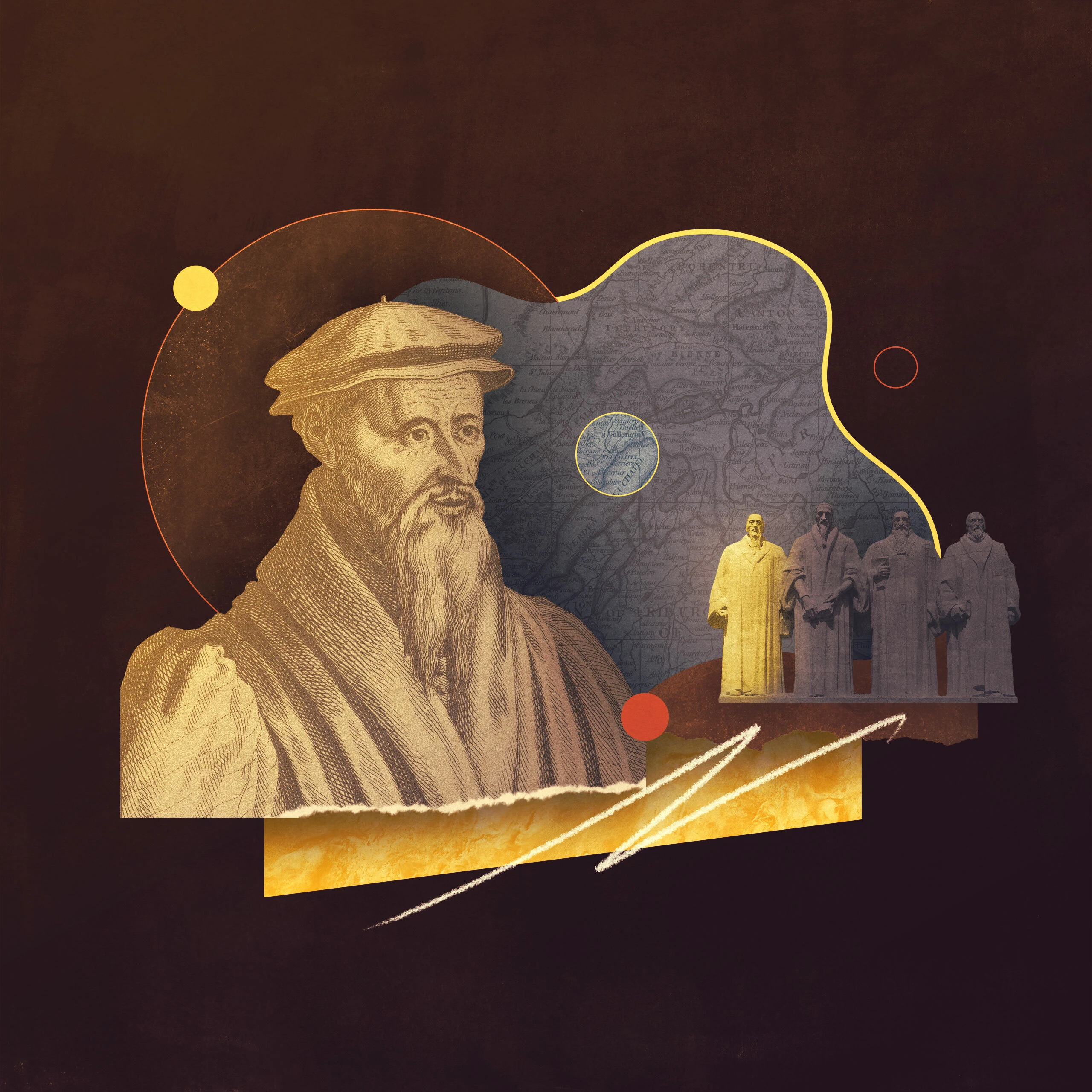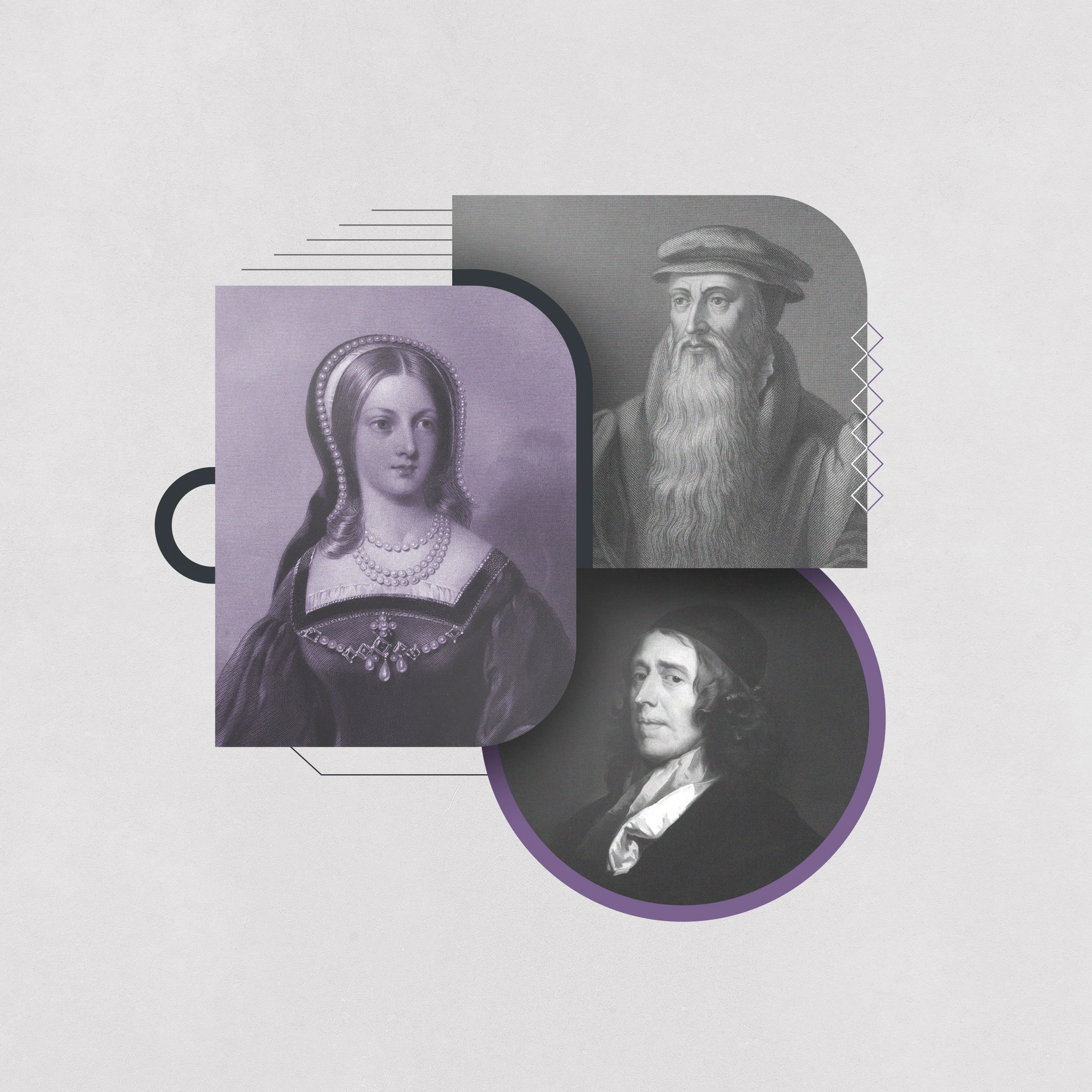Who Was William Farel?

Guillaume (William) Farel is mainly remembered today for that famous encounter with John Calvin in 1536, when he convinced his compatriot to stay in Geneva and work alongside him. Like many other French-speaking Reformers, Farel has been overshadowed by Calvin. He is often described as a mere “fiery preacher,” more gifted at tearing down than building up. The reality, however, is far more complex, and he deserves to be better known.
Farel was born in 1489 in the French Alps, only six years after Luther and twenty years before Calvin. He died in 1565 at age seventy-five, outliving Calvin by about a year. He received a classic education in humanities in Paris and was converted to the new “Lutheran faith,” as it was then known, sometime in 1521. He was soon compelled to leave France for Switzerland, where he would live as an exile for the rest of his life. Beginning in 1527, he exercised an itinerant preaching ministry under the protection of the city of Bern and then ministered in Geneva from 1533–1538. During that period, Farel’s ministry was akin to what we would call “church planting,” which is unique among the first-generation Reformers.
Farel started evangelizing the city of Geneva in December 1533 and was instrumental in convincing the whole city to embrace the Reformed faith. He preached the Word tirelessly in the streets, and later, when the priests and monks left the city, in church buildings. He convinced several other men to join him, notably Pierre Viret. He also engaged in several successful public disputations against Roman Catholic opponents.
He wrote a few books that are forgotten today but were the first resources in French about the new Reformed faith: a short summary of the Reformed faith first published in 1529, a brief Reformed liturgy in 1533, and a short commentary on the Lord’s Prayer (largely inspired by Luther).
Crucially, Farel also understood early on the significance of Swiss urban democracy, and he saw that the only way for the Reformation to triumph in Geneva was for it to be adopted by a democratic vote. As the support for the Reformation grew among the population, Farel urged the city council to embrace the new faith. On August 10, 1535, the mass was abolished until further notice, prompting the remaining monks and priests to leave the city. The Duke of Savoy, to whose duchy Geneva belonged, besieged the city to force it to reverse that decision. The siege went on throughout the winter of 1535–36, which was one of the most challenging times in the city’s history. Throughout these dark winter months, Farel and a few other ministers continued to preach, minister, and encourage the population.
Farel’s ministry was akin to what we would call “church planting,” which is unique among the first-generation Reformers.
When the siege was lifted in the spring of 1536, Farel pleaded again with the city council for a clear commitment to the Reformation. Eventually, on May 21, 1536, the council of all the heads of city households voted the following motion, drafted by Farel: “With God’s help, we want to live according to the evangelical law and the Word for God as it is preached to us, forsaking all masses, other ceremonies and papal deceits, images, idols and live united and obedient to God’s justice.”
Geneva was now officially and democratically a Reformed city. In God’s providence, only two months later, a promising twenty-seven-year-old Frenchman, John Calvin, passed through the city. The rest is history.
Calvin later acknowledged what he owed Farel and Viret in the dedication of his commentary on Titus:
The task of putting the finishing hand to that building which Paul had begun in Crete, but left incomplete was undertaken by Titus. I occupy nearly the same position with regard to you.
When you had made some progress in rearing this church with vast exertions, and at great risk, after some time had elapsed I came, first as your assistant, and afterwards was left as your successor.
Farel and Calvin were soon drawn into conflict with the city council over the confession of faith and catechism they had drafted. They wanted all citizens to affirm them on pain of excommunication, but the council refused, and the conflict led to Calvin and Farel’s expulsion in April 1538. Calvin would return three years later, but Farel moved to the city of Neuchâtel, where he ministered for the remaining twenty-seven years of his life.
Interestingly, in 1545, seven years after Farel left Geneva, when Calvin and the council were again embroiled in controversies, the pro-Reformation party was still called the “Farellists,” not the “Calvinists.” This shows that Farel’s influence was probably more profound than it seems to us five hundred years later.
Perhaps the most fitting conclusion about Farel’s ministry can be left to Calvin himself. In a letter to the Neuchâtel consistory in 1565, he wrote: “I earnestly plead with you to remember how much he worked, for over thirty-six years, serving God and edifying the church; how profitable his labours have been, how zealous he has been, and all the blessings you have received from him.”1
This article is part of the Historical Figures collection.
-
Calvin to the ministers of Neuchâtel, September 26, 1558 (my translation). ↩


